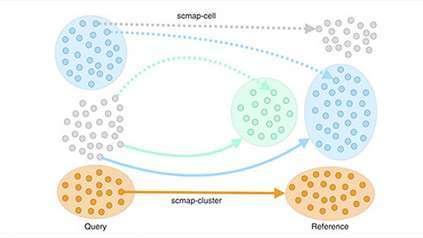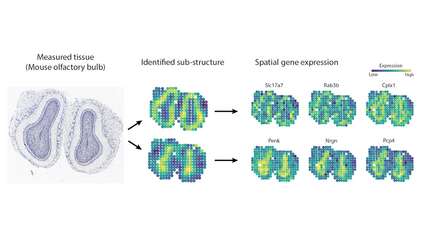Fresh insights could lead to new treatments for liver disease
Scientists have identified new sub-types of cells that, when they interact, accelerate the scarring process in diseased livers.
Experts hope that by understanding more how these cells behave, new treatments can be developed more quickly for liver diseases.
One in five people in the UK are at risk of developing liver disease. It is predicted to become the most common cause of premature death in the UK.
It can occur as a result of a number of conditions such as obesity, alcohol excess, viral infections, autoimmune diseases or genetic disorders.
Long-term damage leads to the formation of scar tissue within the liver, eventually causing liver failure. There are currently no treatments available to prevent or reverse this.
Scientists from the University of Edinburgh used a new technology called single-cell RNA sequencing to study liver scarring in high definition.
They discovered sub-types of three key cells: white blood cells called macrophages, endothelial cells – which line blood vessels – and scar-forming cells known as myofibroblasts.
The study, published in Nature, was funded by the Wellcome Trust, Medical Research Council, Guts UK, Children’s Liver Disease Foundation, Tenovus Scotland, British Heart Foundation, NIHR and AbbVie pharmaceuticals.
“Identifying new treatments for liver scarring is critical to tackling the epidemic of liver disease that we are currently facing. For the first time, we now have an in-depth understanding of how cells behave and talk to each other in diseased livers and, importantly, how we might block their activity as a treatment for liver scarring.”
Dr Prakash Ramachandran Researcher at the University of Edinburgh’s Centre for Inflammation Research and Consultant Liver Specialist at the Royal Infirmary of Edinburgh
‘Using this new technology has allowed us to study human liver scarring in high definition for the first time. We hope that this new cutting-edge approach will rapidly accelerate the discovery of much-needed new treatments for patients with liver disease.”
Professor Neil Henderson From the Centre for Inflammation Research and Consultant Liver Specialist at the Royal Infirmary of Edinburgh
“The discovery of three new sub-types of cell involved in human liver scarring is another important moment in the fight against liver disease and for the Human Cell Atlas initiative. The data is now publicly available for other researchers to use and will be a great resource as we attempt to tackle this epidemic.”
Dr Sarah Teichmann From the Wellcome Sanger Institute, University of Cambridge and co-chair of the Human Cell Atlas Organising Committee
More information
Publication:
Ramachandran P et al. Resolving the fibrotic niche of human liver cirrhosis at single-cell level. Nature DOI: 10.1038/s41586-019-1631-3
Funding:
The research was funded by the Wellcome Trust, Medical Research Council, Guts UK, Children’s Liver Disease Foundation, Tenovus Scotland, British Heart Foundation, NIHR and AbbVie pharmaceuticals
Selected websites
Wellcome Sanger Institute
The Wellcome Sanger Institute is a world leading genomics research centre. We undertake large-scale research that forms the foundations of knowledge in biology and medicine. We are open and collaborative; our data, results, tools and technologies are shared across the globe to advance science. Our ambition is vast – we take on projects that are not possible anywhere else. We use the power of genome sequencing to understand and harness the information in DNA. Funded by Wellcome, we have the freedom and support to push the boundaries of genomics. Our findings are used to improve health and to understand life on Earth. Find out more at www.sanger.ac.uk or follow us on Twitter, Facebook, LinkedIn and on our Blog.





